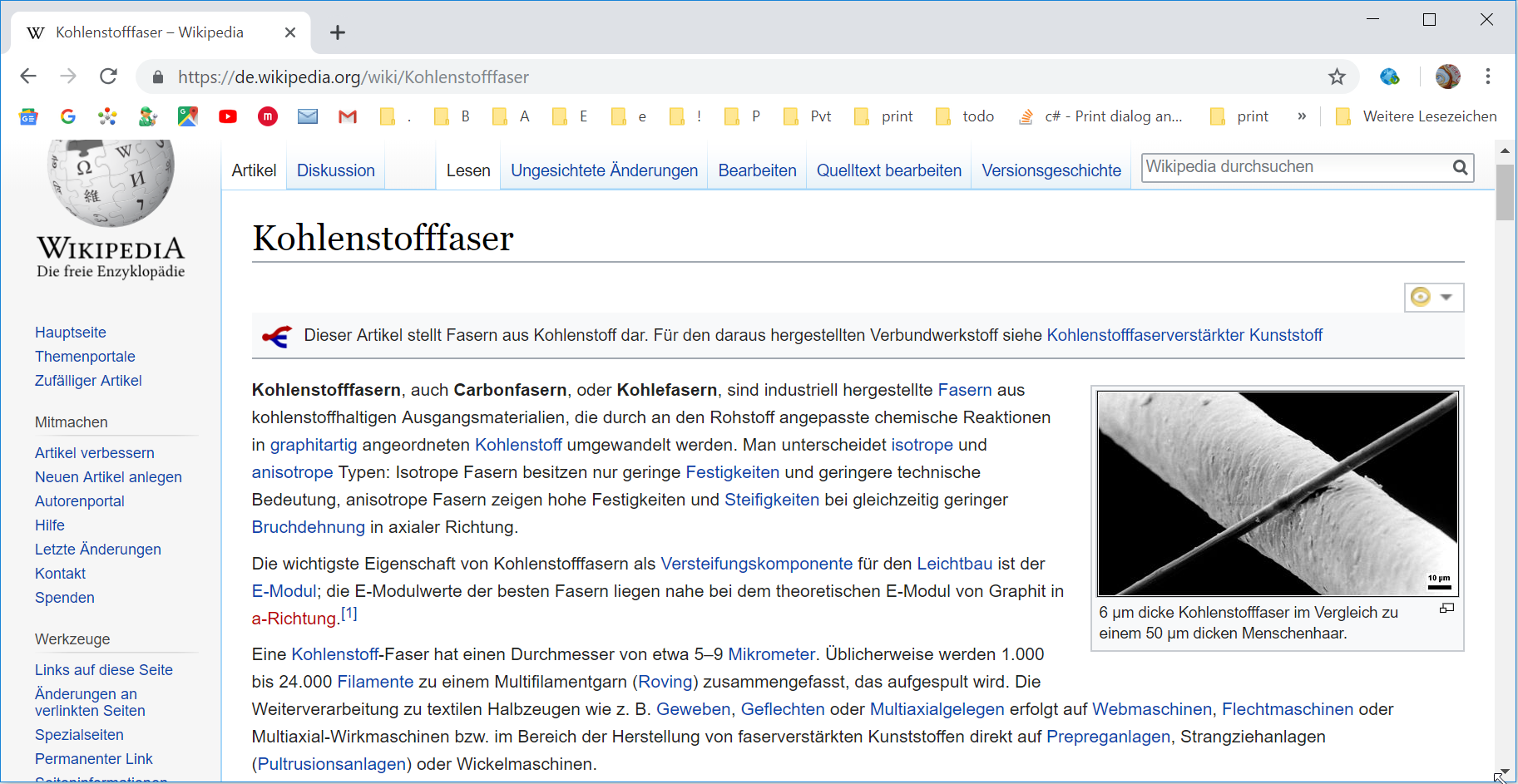Kohlenstofffasern sind elektrisch und thermisch sehr gut
leitfähig
|
Material
|
Elektrische Leitfähigkeit
|
Magnetische Leiffähigkeit
|
|
Carbonfaser
|
1,6·10−5 Ohm·m[2]
|
|
|
Graphen
|
100 · 106
|
|
|
Graphit
|
3 · 106
|
|
|
Aluminium
|
37,7 · 106 A/(V
· m)
|
1 + 2,2·10−5
|
|
Kupfer
|
58,1 · 106 A/(V
· m)
|
0,9999936 = 1 −
6,4·10−6
|
|
Eisenblech
|
|
300…10.000
|
|
amorphe Metalle
|
|
500.000
|
|
Kohlenstoff
|
|
−2,2 · 10−5
|
Carbonfaser
https://de.wikipedia.org/wiki/Kohlenstofffaser
Kohlenstofffasern, auch Carbonfasern, oder Kohlefasern
Spezifischer elektrischer Widerstand: 1,6·10−5 Ohm·m[2] (=
16 Ω · mm2/m)

Kohlenstoff
https://de.wikipedia.org/wiki/Kohlenstoff
Aluminium
https://de.wikipedia.org/wiki/Aluminium
Elektrische Leitfähigkeit 37,7
· 106 A/(V · m)
Kupfer
https://de.wikipedia.org/wiki/Kupfer
Elektrische Leitfähigkeit 58,1
· 106 A/(V · m)
Magnetismus diamagnetisch
(Χm = −9,6 · 10−6)[6
Magnetische Permeabilität
https://de.wikipedia.org/wiki/Magnetische_Permeabilit%C3%A4t
Metallische Gläser
https://de.wikipedia.org/wiki/Metallisches_Glas
Graphen aus Hanf
https://winfuture.de/news,76074.html
statt 40 Euro pro Kilo eher wie Kupfer